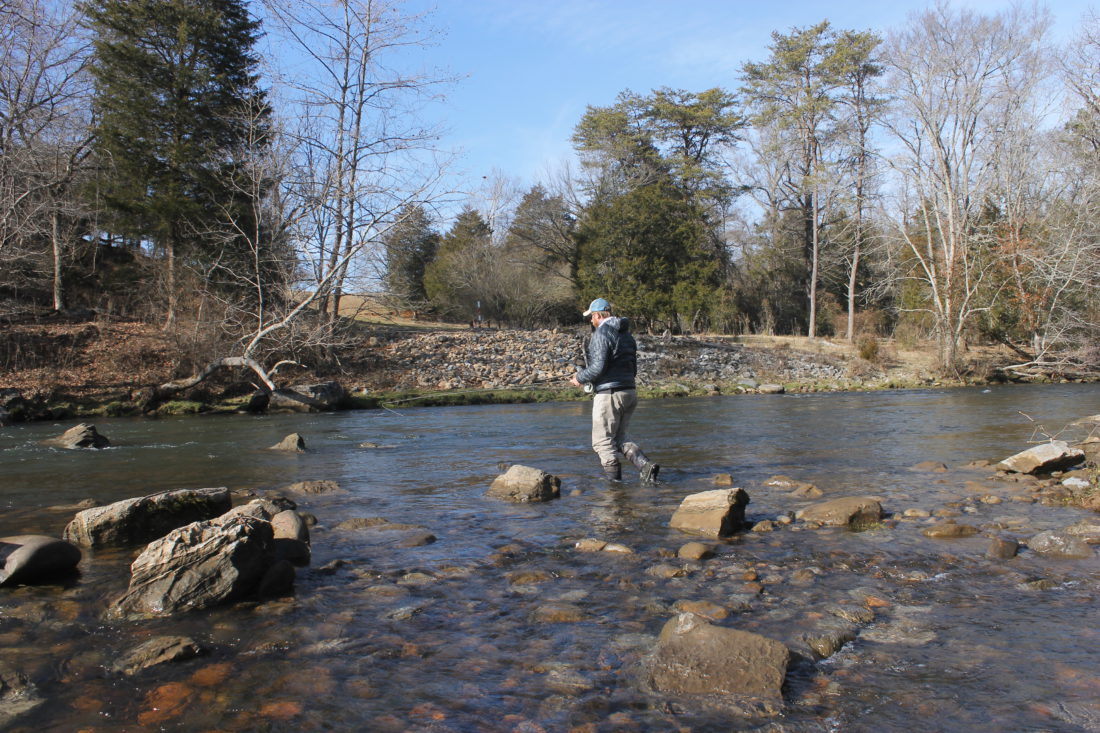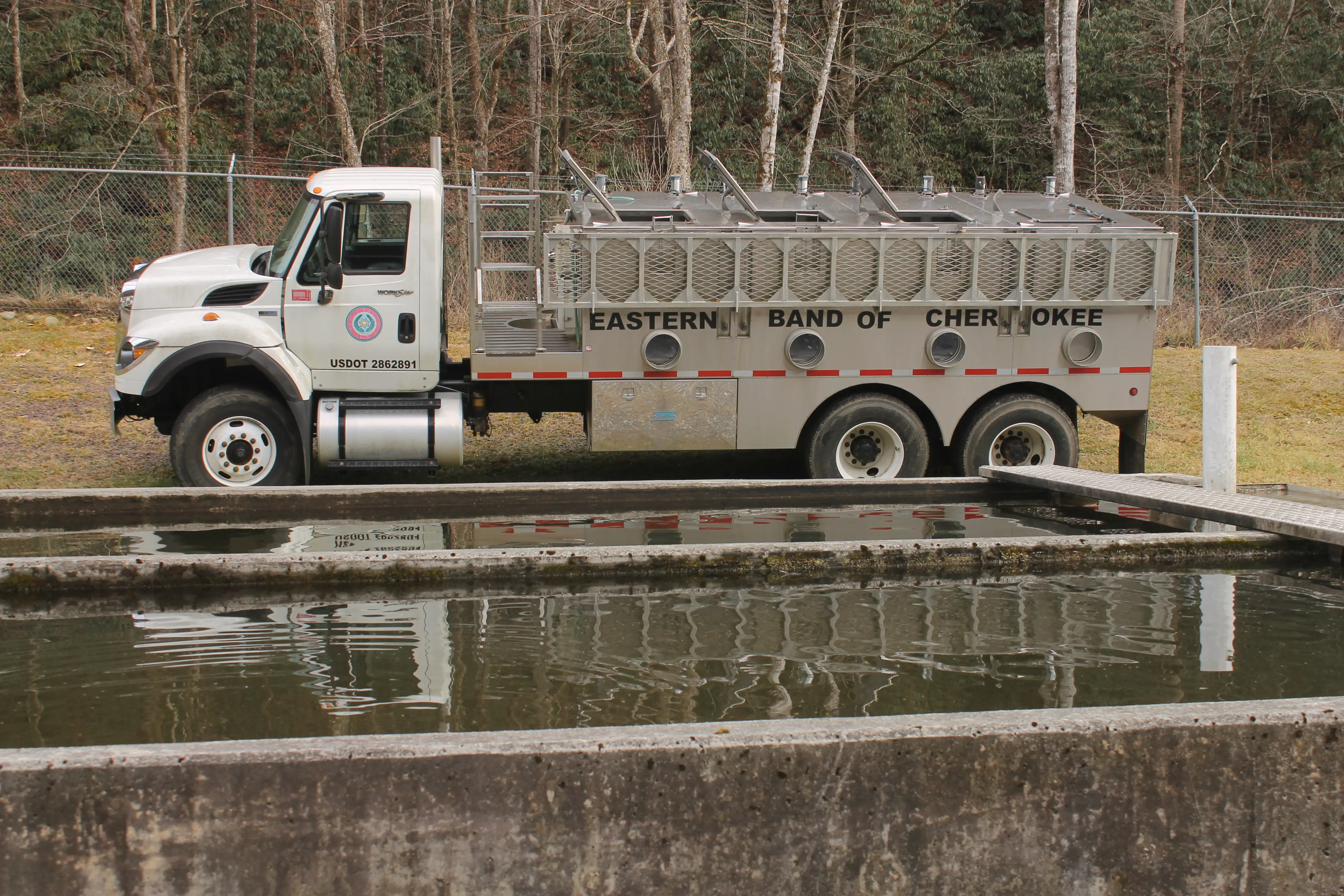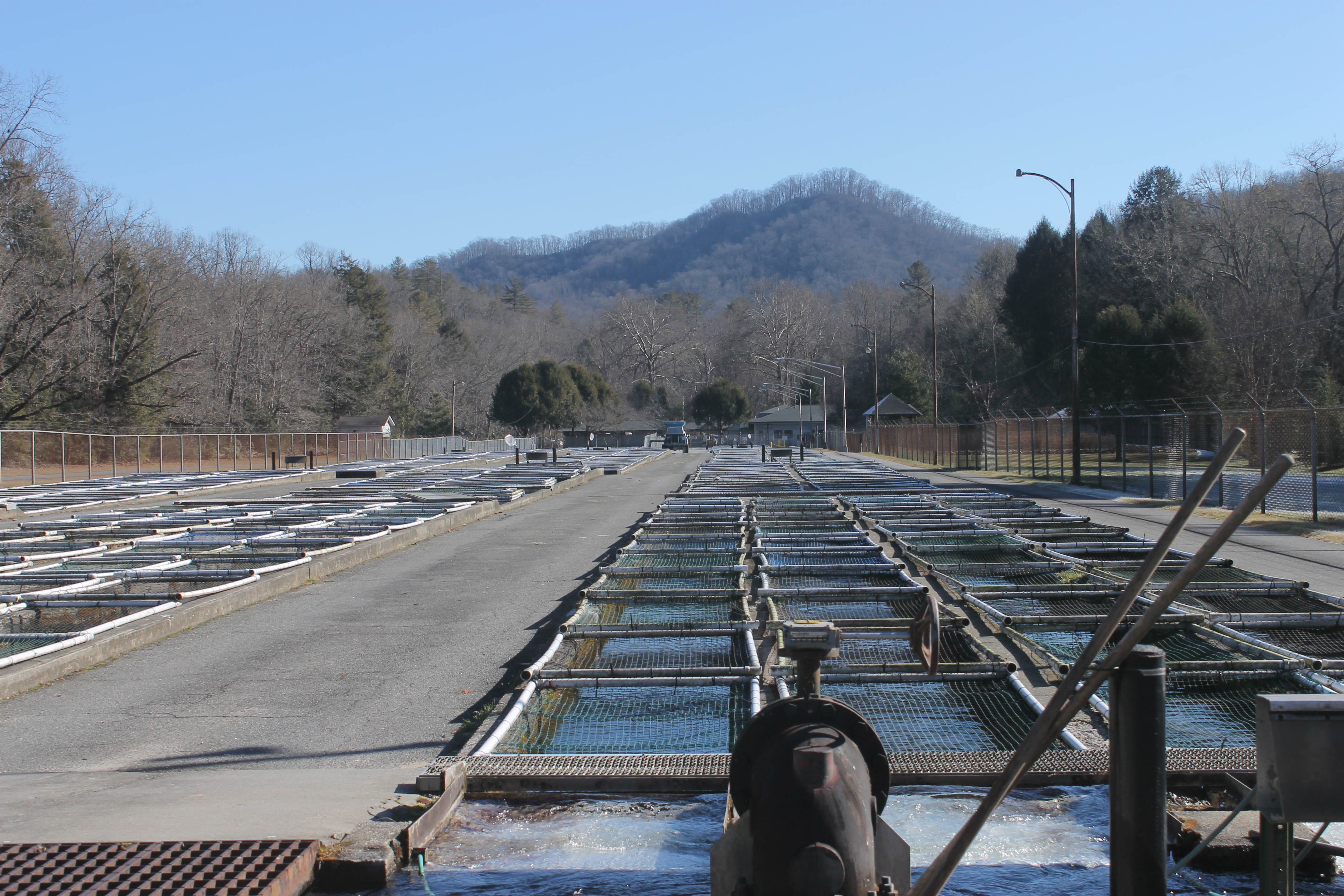
On May 18, 1939, The Transylvania Times of Brevard published an essay introducing readers to three species of trout found in Western North Carolina streams and rivers: rainbow, brown and the only native species, brook. Author and aquatic biologist Thomas Chamberlain characterized the brook (also called speckled) trout with anthropomorphic flair.
“For the native trout,” Chamberlain wrote, “grand as he is, does not take kindly to the changes made in his home surroundings by civilization.”
Although commercial logging began in WNC in the late 1600s, the scale of the timber harvest grew substantially as railroads connected the region to the coasts, and by the 1890s, local forests were under serious threat. Chamberlain noted that heavy logging had harmed brook trout. He wrote: “The cutting away of timber has caused the larger streams to become warmer. This means less oxygen to breathe and greater susceptibility to disease.”
The habitat loss that Chamberlain bemoaned in 1939 still threatens brook trout today, over 80 years later.
“Without the habitat, the fish don’t have a chance,” says Jacob Rash, coldwater research coordinator at the N.C. Wildlife Resources Commission.
In an intact habitat, tree cover along riverbanks keeps waters cool in the summer, so brook trout don’t struggle to breathe. Roots hold dirt in place, preventing loads of sediment from washing into streams during storms and clogging the fish’s gills. Undisturbed rock beds provide places to lay eggs, and deep pools offer refuge from predators — each microhabitat serves a different need.
But habitat loss is no longer the only worry for brook trout. Researchers and wildlife managers must now protect the fish, an environmental and cultural symbol of WNC, against the growing threat of climate change. Projected shifts in temperature and precipitation will make the species work harder to find the clean and cold mountain waters it depends on.
Rash worries that the stress of continued habitat loss and climate change will combine to create unforeseen consequences. “It’s always this cumulative effect of insults that ultimately has an impact,” he says.
In hot water
By 2060, WNC will likely see 10 to 20 more days a year where temperatures reach 95, according to a recent report from the N.C. Institute for Climate Studies. And the impacts won’t be limited to the middle of summer — temperatures will increase throughout the year, with the average annual hottest and coldest temperatures both rising by at least 3 degrees.
As temperatures climb, so too will humidity, which increases the likelihood of heavy rain. For a species like brook trout, which depends on cold, clear water, these changes could present an existential threat, says Kenneth Kunkel, lead author of the NCICS report.
Climate processes could also exacerbate one another to further increase stress for trout, Kunkel continues. “The warmer temperatures and the greater risk of wildfires are directly linked,” he says. “If you have a dry spell in the future, temperatures are likely to be warmer, which means soil moisture levels will drop and debris on the forest floor will dry out faster.” The dry soil and debris could provide more fuel for wildfires, killing trout with intense heat or toxic ash falling into the streams.
Those whose livelihoods rely on trout have already seen climate effects like extended droughts on their businesses. Galen Kipar, the owner of Asheville Fly Fishing Co. and a fly-fishing guide for 15 years, explains, “We watch the weather like a hawk because it affects our job so much.”
Kipar returns often to the same spots and observes changes in the environment month after month, year after year. In 2016, WNC went through a severe fall drought, and he saw how it changed the streams. Some days, he recalls, the temperatures neared 100, with lower-than-usual water levels.
“Low water levels plus high temperatures is a bad combination for trout. They are basically suffocating,” Kipar says. “With steady fishing pressure matched with that scenario, we saw more fish killed that year.”
Losing ground
Trout have been a staple food for the Eastern Band of Cherokee Indians for centuries, and fishing remains a popular communal activity among tribe members.
“For so many people in the tribe, their life is on the stream,” says David Rowland, the tribal hatchery fish culturist for the Eastern Band.
The fishing industry is also economically important for the tribe. It’s worth about $25 million annually, according to tribal estimates, which makes it the second-largest industry behind gaming. Much of that revenue comes from fishing permit sales. In 2020, a record number of visitors came to the Qualla Boundary to fish as people sought to get outside during the pandemic.
“It was outrageous,” says Rowland. Born and raised within the Qualla Boundary, Rowland remembers in the old days seeing cars bumper to bumper as tourists came to see the sights. 2020 was a similar scene, and the Eastern Band sold a record number of fishing permits.

Trout’s economic importance raises the stakes for protecting them from a changing climate. Andrew Sanders is a doctoral candidate at N.C. State University in ecology and evolutionary biology. As a member of the Cherokee Nation of Oklahoma, he wanted to work with the Eastern Band. For one of his courses, he modeled the change in suitable brook trout habitat on Eastern Band territory based on different climate scenarios.
The results were bleak. Using the Intergovernmental Panel on Climate Change’s most optimistic temperature projections, which indicate about 3.8 degrees of warming by 2100, the models predict that brook trout will lose 50% of their habitat in the Qualla Boundary in the next 50 years. The most extreme climate scenario, projecting a nearly 9-degree increase by 2100, would eliminate 92% of suitable brook trout habitat on Eastern Band land by 2070.
Sanders points out that temperature is only one factor determining the brook trout’s future. Increased regional rainfall could cool down the water, and additional tree cover would provide more shade. But conditions also could swing the other way.
“If we expect more canopy loss in the future, these models might turn out to be optimistic,” Sanders notes. “The thing about forest cover is that it can be lost much more quickly than it can be gained.”
Looking at Sanders’ maps of declining suitable habitat, a pattern emerges: As temperatures rise, less livable habitat is available to trout, and the surviving populations become more isolated — further increasing their vulnerability to habitat loss.
Stronger together
Many of the warmer, lower-elevation waters in WNC are stocked primarily with rainbow trout by the state Wildlife Resource Commission and private farms to support the state’s booming sport fishing industry. A study conducted on behalf of the WRC found that the total economic output from fishing in wild trout waters in 2014 was about $60.8 million, supporting over 500 jobs.
Both stocked and wild trout waters are now home to nonnative rainbow and brown trout, whose aggressive behavior can outcompete the native species. Thus, wild brook trout increasingly find themselves relegated to the most remote, high-altitude streams.
“The more complex a habitat is, the more connected it is, the better the ability the fish has to withstand those impacts,” says Helen Neville, senior scientist at Trout Unlimited.
“There are thousands and thousands of road culverts that cut [the fish] off and isolate them into little headwater streams,” Neville explains.
While road building isn’t contributing greatly to climate change, Neville believes it will make the brook trout’s future even more tenuous. “Road culverts are a good example of a broad-scale impact that reduces their resilience to climate change,” she says, “because they can’t move to find the right types of habitat when they need it.”
Neville hasn’t lost hope for the brook trout, though. Her research into trout migration and response to disturbances has shown that they can be adaptive to change, even going as far as shifting their reproductive age in response to extreme weather like wildfires.
“They are an incredibly resilient animal,” Neville commented. “If we do give them what they need in terms of connecting habitats, they’ll respond.”
Protecting a treasure
“The speckled trout is a beautiful fish,” Chamberlain wrote in 1939. “The olive and black mottling on his back, the red spots on his side and the white marks on his paired fins always give a thrill when he is freshly caught.”
For residents of WNC, brook trout have always been more than just another animal. “My dad and my grandfather brought me onto the river to fish,” Rowland reflects. “It’s been a passion since I was a child. Now I love to take my 5-year-old out, too.”
“It’s a way of life,” says Kipar. “It’s not just the trout. It’s everything that happens in pursuit of the trout. The people that you meet, the little things in nature that you notice, the life lessons that you can learn.”
“It’s the native fish of our mountains,” Rash emphasizes. “The one that generations of folks have grown up with.”
The state wildlife commission is one of many groups active in the Eastern Brook Trout Joint Venture, a partnership involving government agencies, nonprofits, businesses and citizens to protect the species across its entire native range. Rash is hopeful that this nationwide, collaborative effort can support the fish.
“Trout conservation flows downstream,” Rash explains. “If we can do all this great work in the mountains, in the headwater, we have a chance to have this roll downstream. We can know that what’s at the top is starting at a better place.”
The national nonprofit Trout Unlimited also actively works in North Carolina to replace road culverts with structures that allow fish to pass through, connecting previously isolated stream sections.
“If we can think about ways to mitigate habitat loss,” Rash concludes, “that can give fish a fighting chance to deal with what comes their way.”
Taking stock
With an estimated economic impact in the mountain region of North Carolina of over $334 million in 2014, sport fishing for trout in both wild and hatchery supported waters is an important source of revenue for Western North Carolina.
Many anglers pursue their passion on rivers and streams stocked with trout by public agencies. The N.C. Wildlife Resources Commission releases over 1 million trout in a year, spread among 950 miles of streams and 4,000 acres of reservoirs. Many of the stocked streams are located at lower elevations than would support wild trout populations. The rainbow, brown and brook trout released are all sterile, so they don’t breed with wild populations of fish.
The Eastern Band of Cherokee Indians runs a fish hatchery on the Qualla Boundary. The tribe releases about 200,000 mostly rainbow trout throughout the year. Hatchery managers believe the average trout doesn’t remain in the waters much more than a week before being caught.
Fishing also takes place in wild trout waters.
— Emma Johnson







